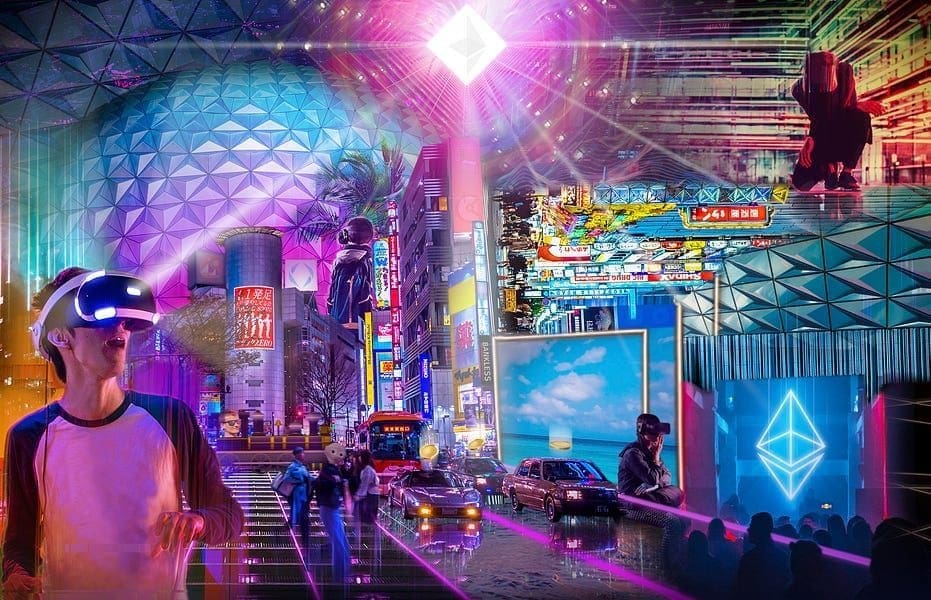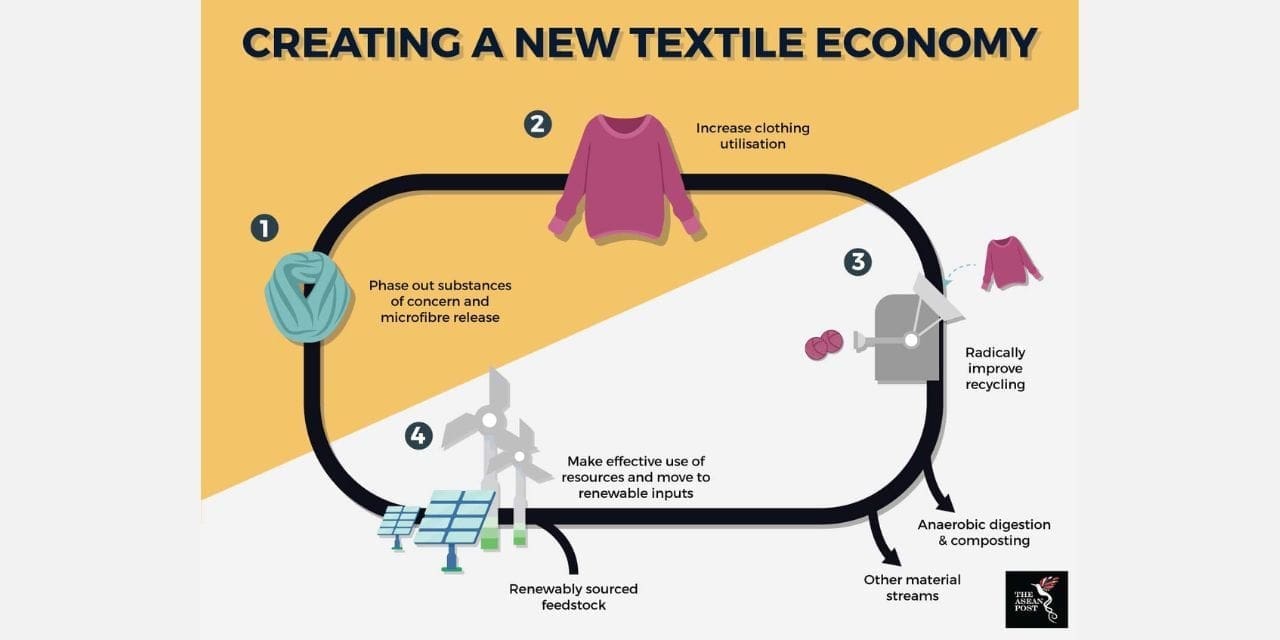By Pratyasha Sarkar
Retail Trends
Required assistance in predicting consumer demands, identifying consumer possibilities, or guided strategic planning molded according to the ongoing megatrends, has become the only residence for fashion retailers to carve out a place for themselves in the field accustomed to the cutthroat competition of the fashion world. With the constant altering of perspectives in the contemporary, trend forecasting has enabled industries to stand out from the competition, reduce risks, and spur innovation, by giving them an edge in the marketplace. Additionally, it equips businesses with the knowledge and tools they need to make wise choices, explore fresh avenues, and respond to changing consumer demands.
Fashion has long placed a high priority on sustainability and adaptability. Customers, however, don’t merely want firms to wait and observe what fashion trends are before acting. Brand differentiation is a reflection of businesses’ rising ambition to go above and beyond what is generally expected of them and come up with innovative, creative, and digital ways to stand out.
The trends are shaping the fashion retail industry at present and in the near future.
Circular Textiles
Circular textiles, also known as circular fashion, is a sustainable approach that aims to minimize waste and maximize the lifespan of textiles. It involves creating a closed-loop system where materials are recycled, reused, or repurposed instead of being discarded. By embracing practices such as recycling, upcycling, and designing for disassembly, circular textiles promote resource efficiency and reduce the environmental impact of the fashion industry. This approach not only addresses the issue of textile waste but also encourages durability, extends product lifespan, and fosters innovative business models such as rental and sharing platforms. By adopting circular textiles, the industry can move towards a more sustainable and responsible future, contributing to a circular economy and minimizing its ecological footprint.
The concept of the metaverse, a virtual shared space where users can interact with a computer-generated environment and other users, is increasingly shaping various industries, including fashion. The metaverse has the potential to significantly impact the fashion industry in several ways. In the metaverse, users can create and customize their digital avatars, which opens up opportunities for virtual fashion. Virtual clothing, accessories, and other fashion items can be designed and worn by these avatars, allowing users to express their personal style and experiment with different looks without physical limitations. Virtual fashion also offers sustainability benefits as it reduces the need for physical production and material consumption.
Metaverse

With the metaverse, digital fashion marketplaces can emerge where users can buy, sell, and trade virtual clothing and accessories. These marketplaces can be platforms for fashion designers and creators to showcase and monetize their digital creations, fostering a new economy centered around virtual fashion.
The metaverse enables personalized fashion experiences, including virtual try-on. Users can virtually try on clothing and accessories, experiment with different styles, and make informed purchasing decisions. This virtual try-on technology can enhance the online shopping experience and bridge the gap between physical and digital retail.
In the metaverse, influencers, and content creators can play a significant role in shaping fashion trends and driving consumer behaviour. They can collaborate with brands, curate virtual fashion collections, and inspire their followers with their virtual style. The metaverse blurs the line between real-life influencers and virtual personas, creating new opportunities for brand partnerships and marketing campaigns.
As the metaverse expands, there is potential for integration between virtual and physical fashion. This could involve incorporating elements of virtual fashion into physical garments or creating hybrid fashion experiences that combine physical and virtual elements. The metaverse can also serve as a testing ground for fashion concepts and designs before bringing them into the physical world.
Overall, the metaverse is likely to revolutionize the fashion industry by offering new avenues for creativity, self-expression, commerce, and brand engagement. It has the potential to redefine the way we experience, consume, and interact with fashion, blurring the boundaries between the physical and digital realms.
Social media Intervention
Many consumers now look to social media platforms for support and assistance, examining influencers’ clothes on Instagram and TikTok, browsing user-curated boards on Pinterest, and sending snaps on Snapchat to seek counsel. According to several studies, the pandemic has increased dependency on social media, with 74% more people being encouraged to purchase through these platforms than they were before the pandemic, and 70% mentioning apparel as the product they shop for most. Over the next two years, social commerce sales in the US are anticipated to increase by 51% to reach $56 billion as customers experiment with new social buying channels. Global social commerce sales are predicted to reach $600 billion by 2027.
Experiential retail

Experiential retail refers to a retail strategy that goes beyond traditional brick-and-mortar shopping by creating immersive and engaging experiences for customers. It aims to provide memorable and interactive moments that enhance the overall shopping journey, strengthen brand connections, and differentiate the retail experience from online shopping. Here are some key aspects and benefits of experiential retail
Product passports
Product passports are a concept gaining traction in sustainability and consumer awareness initiatives. They are digital or physical documents that contain detailed information about a product’s lifecycle, including its materials, manufacturing processes, environmental impact, and social responsibility aspects. The aim of product passports is to provide transparency and enable informed decision-making by consumers and other stakeholders.
Promoting transparency by providing comprehensive information about a product’s origins, materials, and production processes, product passports enable consumers to make informed choices based on their values and preferences. It also encourages companies to disclose their supply chain practices and demonstrate accountability.
It facilitates a better understanding of a product’s environmental impact throughout its lifecycle. They may include details such as carbon footprint, water usage, energy consumption, and waste generation. By providing this information, product passports empower consumers to choose products with lower environmental impacts and encourage companies to improve their sustainability practices.
In addition to environmental aspects, product passports can include information about social responsibility and ethical considerations. This may involve details about fair labor practices, human rights, supply chain transparency, and certifications related to social and ethical standards. By highlighting these aspects, product passports enable consumers to support companies that align with their values and promote ethical practices.
Thrift or Pre-owned clothing
Second-hand fashion, also referred to as thrift or pre-owned fashion, is the term for apparel and accessories that have been owned in the past and are being sold or given away for reuse. Due to its advantages in terms of sustainability and the rising interest in conscious consumption, secondhand clothing has become more and more popular in recent years.
By extending the life of garments, it lessens the fashion industry’s impact on the environment by cutting down on carbon emissions, water use, and trash production. The circular economy’s guiding principles are in line with used clothing’s promotion of reuse and recycling. It provides accessible and inexpensive solutions, enabling anyone to buy designer goods in a variety of styles, brands, and price ranges. Due to the wide variety of clothing available for many ages, styles, and cultures, secondhand fashion also allows for individual self-expression. People can support ethical concerns by avoiding fast fashion and the attendant exploitative labour practices by making second-hand purchases. By assisting small companies and neighborhood thrift shops, it promotes community and boosts the local economy.

